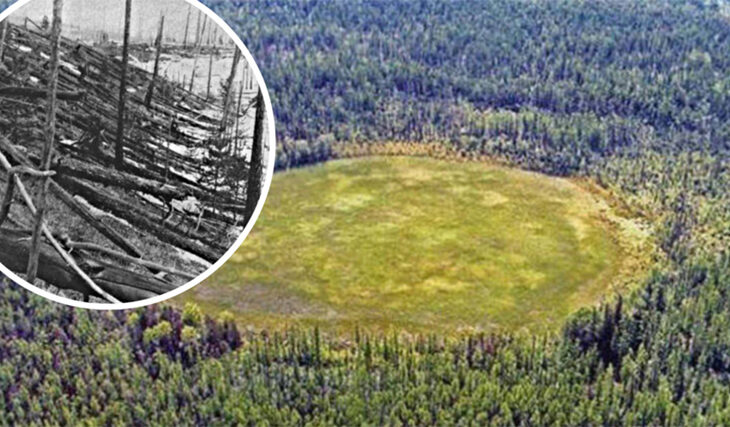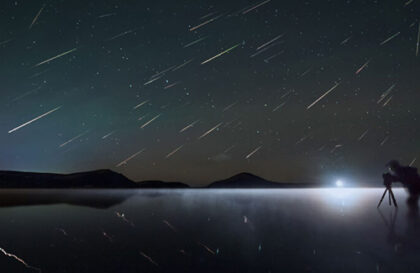Mysteries of the Tunguska phenomenon
Not a single piece was found.
There is no crater.
Fallen forest on a huge area. In the epicenter, the trees were burned but remained standing. The rest fell in one direction.
The cause of the fires that engulfed the epicenter area of more than 160 square kilometers.
The presence of a blast wave further confuses everything.
Intensive tree growth at the site of the explosion.
Expeditions to the site of the fall of Tungus
The first expedition reached the site of the explosion only in 1921. After 13 years.
In 1927-1939, Leonid Alekseevich Kulik, with the support of the USSR Academy of Sciences, organized and led four more expeditions (in 1927, 1928, 1929-1930, and 1938-1939) to the site of the fall of the Tunguska meteorite.
There were many expeditions after World War II.
Alternative hypotheses
The absence of a crater, fragments, and unresolved contradictions in cometary and asteroidal theories led to the emergence of many alternative hypotheses. There are over 100 of them.
77 main hypotheses have been identified, of which 14 are technogenic, 8 are related to antimatter, 3 are religious, 10 are geophysical, 28 are meteorite, 11 are cometary, and 3 are synthetic.
Dust cloud
In 1908, F. de Roy from France suggested that on June 30, 1908, the Earth collided with a cloud of cosmic dust. A similar idea was expressed by V. I. Vernadsky in 1932. In 1961, the biophysicist G. F. Plekhanov, the founder of the CSE (Complex Amateur Expeditions) movement, modified this version. In his opinion, the Earth crossed a cloud of interstellar matter, including a conglomerate that became the Tunguska meteorite. This event affected only the Northern Hemisphere of the Earth.
Research enthusiast Gennady Plekhanov has proposed a humorous “7-bis version”, seen as a possible joke. After being bitten by a midge during one of the expeditions to the Podkamennaya Tunguska area, he suggested that on June 30, 1908, a huge cloud of mosquitoes with a volume of at least 5 cubic kilometers had gathered over the area, which led to a volumetric thermal explosion and the fall of the forest.
Experiments of Nikola Tesla
The version of the Tunguska phenomenon is associated with Nikola Tesla and his experiments on wireless transmission of electricity. Originally voiced by A. Gordon in a telecast around 2000. It is assumed that Tesla experimented on June 30, 1908, creating an “energy supershot” in Alaska, but malfunctions led to destruction in Tunguska. However, there is no evidence that Tesla performed such an experiment that day. There are many theories about the motives for this experiment, but the weakness in the lack of evidence and the change in ownership of the laboratory cast doubt on this version.
The death of the spaceship
Originally put forward by A.P. Kazantsev in 1946 in the story-hypothesis “Explosion” in the magazine “Around the World”. Later, the story became the basis for the story “The Guest from Space” and the novel “The Burning Island”. This idea was also used by Stanislav Lem in the novel The Astronauts (1951).
In the 1980s, A.P. Kazantsev corrected his version, taking into account observations of Earth satellites with anomalous trajectories in 1969. He suggested that the aliens took the ship away from the Earth, and it exploded in space, and the Tunguska meteorite was the result of the landing of the orbital module. Fantast V. Shcherbakov also used this version in the novel The Bowl of Storms (1985).
Maneuver on the trajectory. The hypothesis was put forward in 1959 by F. Yu. Siegel in the journal Knowledge is Power. In the 1960s Siegel argued that the difference in estimates of the trajectories of the Tunguska body was explained by the maneuver it made. This hypothesis continues the ideas of A.P. Kazantsev.
Explosion of antimatter
Lincoln La Paz came up with the idea in 1948 and also in the early 1940s. In 1965, W. Libby, K. Cohen, and K. Etlur developed this hypothesis by associating annihilation with an increased content of the C14 isotope. In the USSR, B.P. Konstantinov supported the idea of a comet made of antimatter. The theory claims that the mutual annihilation of matter and antimatter with energy explains the phenomenon. Radioactive isotopes support the theory. Boris Konstantinov clarified in the 1960s that it was an antimatter comet that invaded, the debris of which cannot be found. The lack of knowledge of antimatter makes the version acceptable, but many scientists are skeptical.
Comet ricochet hypothesis
It was first formulated by I. S. Astapovich in 1963. The author believed that the Tunguska body was a comet with parameters similar to the comet of 1874 by Vinnike-Borelli-Tempel. Invading the atmosphere along a gentle trajectory, the comet lost all shells in 13 seconds, but the nucleus entered outer space along a hyperbolic trajectory. In 1984, the hypothesis was corrected by E. Iordanishvili, in his view, the Tunguska body was a meteorite, not a comet.
Black hole
In 1973, A. Jackson and M. Ryan, researchers at the University of Texas (USA), put forward a hypothesis about the Tunguska meteorite as a black microhole with a mass of 1020–1022 g that collided with the Earth in Central Siberia and passed through it to the Central Atlantic. The idea stems from a mass 5 times that of the Earth and a radius of 4.5 cm. Such primordial black holes can be created from hot plasma in the early stages of the universe. Around them, there may be a halo of dark matter, which sometimes annihilates with a flash in the gamma range. Such holes may even exist in the Kuiper belt.
Natural gas explosion
In 1984-1989. assumptions about the use of natural gas for a powerful explosion were published in the newspapers Komsomolskaya Pravda and Sovetskaya Rossiya. According to D. Timofeev’s calculations, for a comparable power with the Tunguska explosion, 2.5 billion m³ of gas was required. Increased interest in this hypothesis was caused by the explosion of a gas pipeline in Bashkiria on June 3, 1989.
In the 1980s popular version of the giant ball lightning. Representatives of this idea (L. Mukharev, B. German, V. Salnikov) argue that the Tunguska explosion could be the result of a powerful energy pumping of the atmosphere by terrestrial lightning or fluctuations in the atmospheric electric field, which caused a giant ball lightning at the crash site.
Solar plasmoid
In 1984, A. N. Dmitriev and V. K. Zhuravlev from Novosibirsk published a paper in which they proved the possibility of the formation of microtransients – microscopic plasma bodies captured by the Earth’s magnetic field and moving along its gradients. Using mathematical methods and eyewitness data (including a catalog of testimonies from 720 people from Tomsk in 1981), they established that on June 30, 1908, witnesses saw two different objects moving along different trajectories and times. Thus, in their opinion, there were two plasmoids.
In the idea of ”etherograviobolide”, the Tunguska meteorite flew out of the depths of the Earth as a superdense stone block filled with compressed ether. His movement into space is accompanied by sound and electromagnetic phenomena, and he did not fall to the Earth, but, on the contrary, flew out of it.
Tectonic forces
In 1991, A. Yu. Olkhovatov published the first article in Izvestia of the Academy of Sciences of the USSR, the provisions of which were developed in monographs in 1997 and 1999. According to A. Yu. Olkhovatov, the Tunguska explosion was a manifestation of the tectonic energy of the belt of ancient explosive formations – astroblems located near the East Siberian geomagnetic anomaly. Thus, the Tunguska explosion was only a local manifestation of processes on a global scale.
Other hypotheses
- The explosion is associated with a laser signal from the 61st star in the constellation Cygnus.
- Krasnoyarsk engineer Gennady Ivanov suggested that the explosion was caused by a comet breaking through the ozone layer, and solar wind radiation contributed to the growth of trees.
- The explosion of a block of metallic hydrogen weighing 400,000 tons: the fireball created an explosive mixture with oxygen.
- The iron core of a long-period comet from the Oort cloud had the properties of a superconductor, which determined the conditions for the explosion.
Image credit:
https://7news.com.au
https://www.history
https://www.britannica.com
https://www.sciencealert.com


